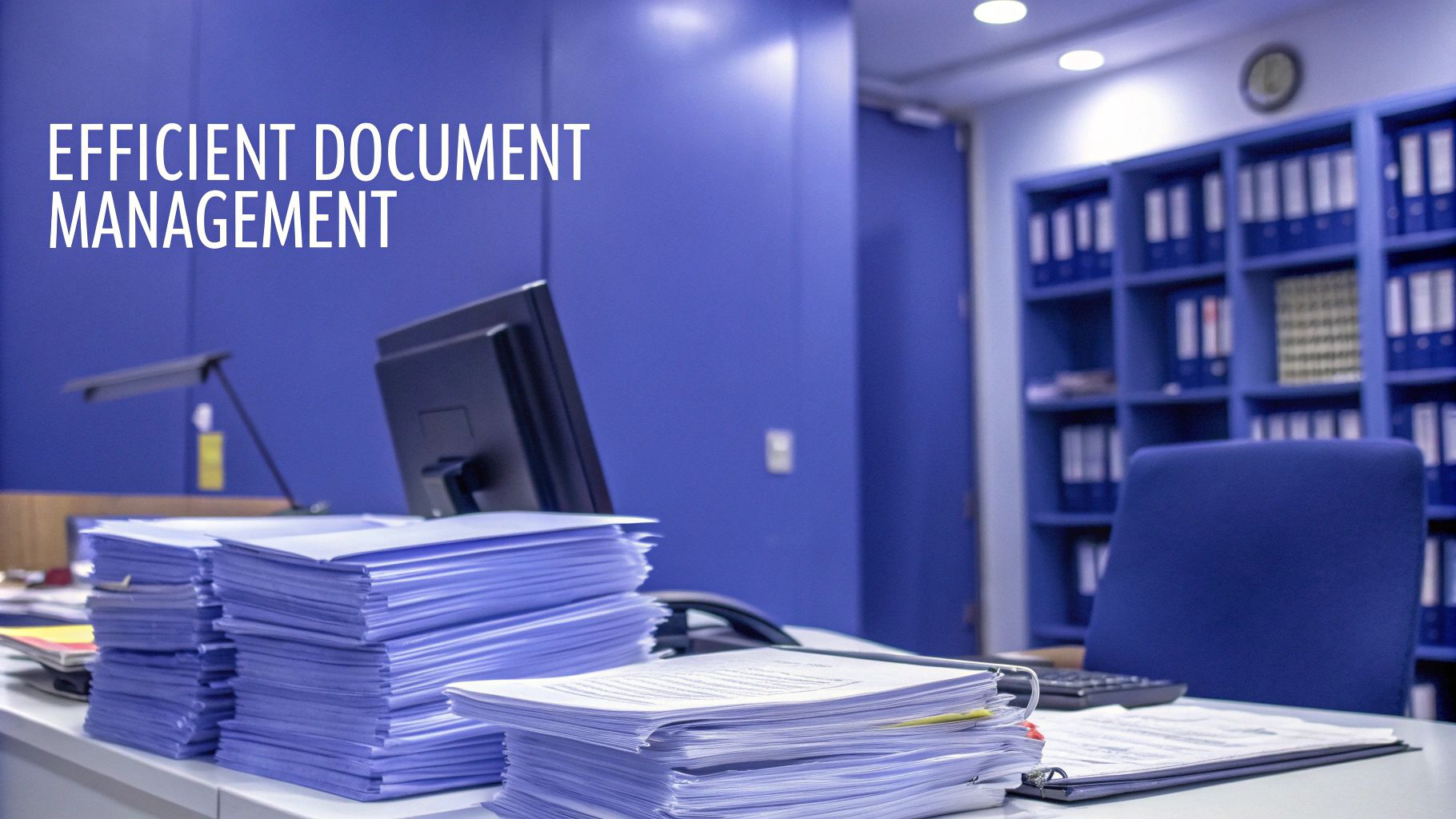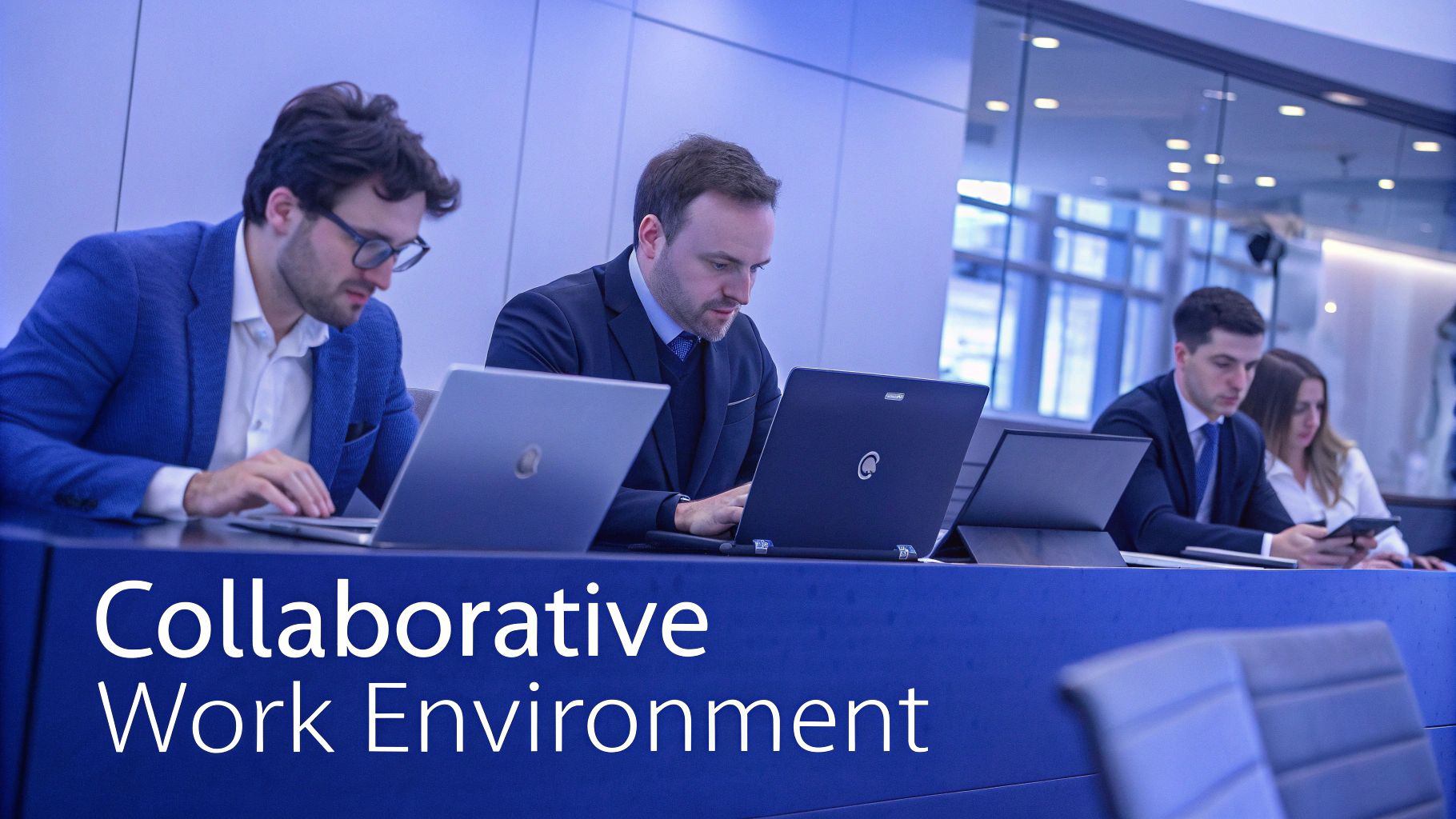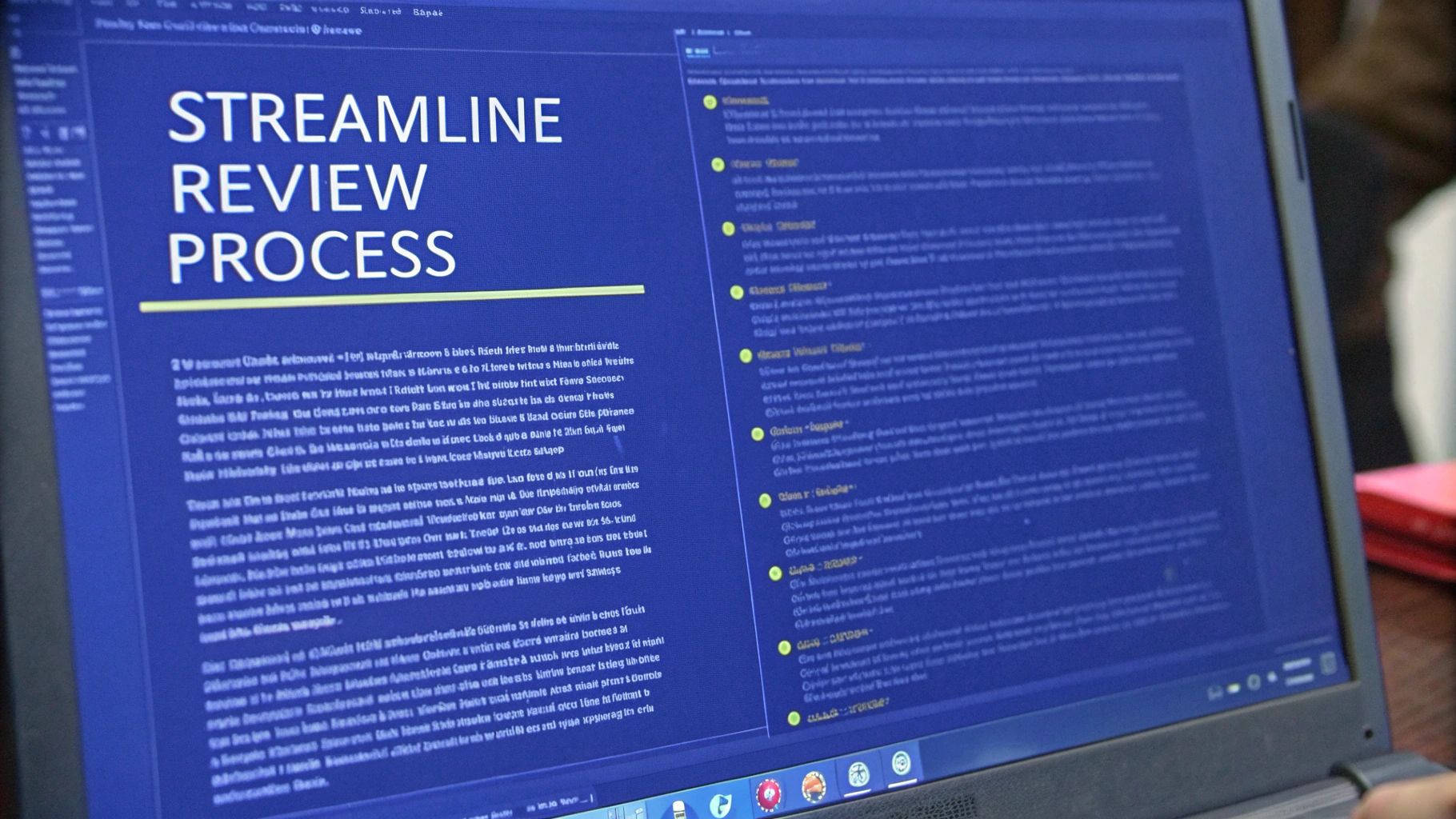"Why Traditional Document Review No Longer Works" while keeping the natural flow and avoiding AI clichés:
Why Traditional Document Review No Longer Works
The legal profession depends on accessing and analyzing information effectively, but modern cases generate overwhelming amounts of data. Picture trying to find specific documents in boxes that fill an entire warehouse – that's the scale of the challenge facing legal teams today. The old approach of manually reviewing documents simply can't keep pace. When legal teams rely on manual review, it creates delays, drives up costs, and ultimately slows down the entire legal process. Let's explore why these traditional methods are falling short and examine how specialized document review software is making a real difference for legal teams.
The Challenges of Manual Review
Going through massive document collections by hand isn't just time-consuming – it fundamentally limits what legal teams can accomplish. Teams often spend long hours reading, analyzing and categorizing documents when they could be focusing on case strategy. Consider a typical commercial lawsuit involving thousands of emails, contracts and financial records. Manual review of this material can stretch on for weeks or months, causing delays and inflating expenses. Human reviewers also make mistakes, especially when fatigued. Key details get missed, documents are misinterpreted, and cases can suffer as a result. The challenge grows even more complex as legal teams encounter new types of evidence like social media posts, chat records and video files that don't fit neatly into traditional review workflows.
The Rise of AI-Powered Solutions
This is where modern document review software proves invaluable. These AI-powered tools work like highly efficient research assistants, rapidly processing huge volumes of data to identify relevant documents and extract important information with remarkable precision. Leading law firms report completing document reviews up to 90% faster while maintaining or improving accuracy levels. Microsoft Azure provides one example of how AI technology is reshaping legal document review. The efficiency gains translate directly into cost savings, allowing firms to use their resources more strategically.
The Benefits of Modern Document Review Software
Beyond pure speed and efficiency, document review software offers several key advantages. The AI can spot patterns and connections in the data that human reviewers might overlook, uncovering valuable insights that strengthen case strategy. These tools also include robust security features to protect sensitive client information, with encryption and access controls preventing unauthorized data access. Additionally, modern review platforms make it simple for legal teams to collaborate effectively regardless of location. This streamlined workflow improves communication and helps complete reviews more quickly.
With cases becoming more complex and deadlines getting tighter, traditional document review methods simply can't deliver what legal teams need. The move toward AI-assisted review isn't just about following trends – it's about giving legal teams the capabilities they need to work more efficiently and effectively. In the next section, we'll examine the specific features that make document review software truly valuable, helping you select the right tools for your team's needs.
Essential Features That Actually Matter
The rapid growth of digital evidence in legal cases means manual document review is no longer sustainable. Legal teams need software that can effectively handle large volumes of documents. But choosing the right solution requires focusing on capabilities that genuinely improve efficiency, not just impressive-sounding features. Let's examine the core functionalities that deliver real value, based on actual user experiences.
Automated Classification: Beyond Basic Tagging
Smart document categorization makes a real difference in review speed and accuracy. Modern software uses machine learning to automatically sort documents by content, relevance, and context. For example, in a case with thousands of emails, the system can instantly group messages by topic, sender, or timeframe – work that would take days to do manually. Some platforms also include predictive coding that learns from reviewer decisions to better identify relevant documents over time, making the process increasingly efficient.
Intelligent Search: Finding the Needle in the Digital Haystack
Basic keyword searches only scratch the surface. Today's search tools understand meaning and context, not just exact word matches. When searching for documents about contract breaches, for instance, the software identifies relevant files even if they don't use those specific terms. This semantic understanding helps legal teams quickly find crucial evidence that traditional searches might miss. The result is faster, more thorough document discovery that captures important details.
Pattern Recognition: Uncovering Hidden Connections
Some of the most valuable insights come from seeing relationships between different pieces of evidence. Modern review platforms excel at spotting patterns that humans might overlook – like communication networks between key players or timelines of events. For example, the software might reveal previously unknown interactions between parties that strengthen a case. This ability to surface non-obvious connections often provides breakthrough moments in complex litigation. You might be interested in: Beyond Google Docs: Exploring the Best Alternatives for Modern Document Creation.
Collaboration and Security: Working Together, Safely
Legal teams rarely work in isolation anymore. Multiple reviewers often need simultaneous access to documents, sometimes from different locations. Good review platforms enable secure sharing, version tracking, and real-time collaboration while maintaining strict access controls and data encryption. This balanced approach keeps sensitive information protected without sacrificing the efficiency of teamwork.
These core capabilities, when properly implemented, can dramatically improve both the speed and thoroughness of document review. The next section will explain how to adapt these tools to your team's specific needs and workflows.
Note: Let me know if you would like me to modify this further or focus on any particular aspect of the rewrite.
Making AI Work for Your Legal Team
Modern legal teams need powerful document review software to stay competitive. Getting the most value requires a thoughtful implementation strategy that considers both the technology capabilities and how your team will actually use it day-to-day. Success comes from carefully planning how AI tools will complement existing workflows while empowering team members to work more effectively.
Training Your Team for Success
The key to successful AI adoption starts with proper team training and change management. Many team members may worry about AI replacing their roles – it's essential to frame AI as a helpful assistant that makes their work easier and more impactful. Focus training on practical, hands-on examples showing how AI handles routine tasks like initial document sorting so lawyers can spend more time on strategic analysis. This builds confidence and enthusiasm as team members see direct benefits to their daily work.
Measuring the Impact of AI
To justify the investment and drive ongoing improvements, you need clear metrics tracking AI's impact. Set specific goals around review time reduction, accuracy improvements, and cost savings. Tools like Google Analytics help monitor key performance indicators and user engagement patterns. Regular measurement shows the concrete value AI brings while highlighting opportunities to optimize how your team uses the technology. Let the data guide your implementation.
Scaling Your AI Implementation
As your team gets comfortable with basic document review features, you can expand into more advanced capabilities. Consider integrating with other legal tech systems, using AI for predictive coding, or applying it to new document types. Take a step-by-step approach, building on each success and matching the pace to your team's growing expertise. This measured expansion helps maximize return on investment while positioning your team for long-term success.
Practical Implementation: Using BugSmash
BugSmash shows how AI can smoothly fit into legal workflows by improving document collaboration. Team members can easily share comments, flag key sections, and work together on revisions – all in one place. This eliminates the hassle of scattered email chains and separate annotation tools. With the legal document management software market expected to reach $2.60 billion in 2024, solutions like BugSmash meet a growing need for more efficient document review. The platform's practical features address real challenges legal teams face when collaborating on complex documents.
Navigating Security Without Sacrificing Efficiency

Legal teams need strong security when handling sensitive client information, but this shouldn't slow down their document review process. With the right tools and practices, teams can protect confidential data while still working efficiently. Here's how to achieve that balance through proven security approaches that maintain productivity.
Encryption and Access Control: Foundational Security Measures
Strong encryption and precise access controls form the backbone of secure document review. Think of encryption like a high-security vault – it scrambles sensitive data so only authorized users with the right key can read it. Access controls then act as additional safeguards by restricting who can view, modify, or share specific documents. For example, Tresorit provides end-to-end encryption and granular permissions that help legal teams collaborate securely while keeping client data protected.
Blockchain Integration: Ensuring Data Integrity
Blockchain technology adds another layer of security by creating permanent, tamper-proof records of document activity. Every time someone accesses, edits, or shares a file, blockchain logs that action in a way that can't be altered. This is especially valuable for complex cases involving multiple parties, since it provides clear documentation of who did what and when. If someone tries to improperly modify a document, the blockchain record immediately reveals the change.
Secure Collaboration: Balancing Security with Teamwork
Today's legal work often requires team members in different locations to review documents together. The key is enabling this collaboration while maintaining strict security standards. Secure virtual data rooms and real-time annotation tools let multiple reviewers work simultaneously on documents with proper access controls and encryption in place. BugSmash offers these collaborative features while meeting security requirements. For more options, see our guide on secure file-sharing platforms.
Practical Strategies for Secure Implementation
Getting the most from secure document review software requires a thoughtful approach. This means training staff thoroughly on security protocols, performing regular security checks, and keeping software updated. Clear communication with clients about security measures helps build trust. When technical safeguards and practical procedures work together, teams can review documents efficiently while keeping sensitive information safe.
Implementation That Won't Disrupt Your Practice

Making the switch to document review software doesn't have to be overwhelming for your legal team. With careful planning and the right approach, you can smoothly integrate new tools while maintaining productivity. The key is focusing on three core elements: strategic workflow integration, effective team training, and measuring real results. Let's explore how to make this transition work for your practice.
Phased Rollout: Start Small, Scale Smart
Instead of changing everything at once, begin with a focused implementation. Pick a specific case type or small team to test the software first. For example, try using it with a straightforward contract dispute case rather than jumping into complex litigation. This controlled testing gives your team space to learn the system and identify any workflow issues early on. As your team builds confidence and expertise, you can steadily expand the software's use across more cases and practice areas.
Targeted Training: Empowering Your Team
Success depends on your team feeling confident with the new tools. Focus training on the specific features they'll use most often in their daily work. Use real case examples in hands-on practice sessions so team members can see exactly how the software helps them work better. Make sure ongoing support is readily available through quick reference guides and dedicated technical help. This builds your team's skills while showing them how the software makes their work easier and more effective.
Measure and Adjust: Data-Driven Improvement
Set clear benchmarks from day one to track how well the software is working. Monitor key metrics like review speed, accuracy rates, and cost savings per case. This data shows you what's working and what needs adjustment in your implementation. Regular check-ins on these metrics let you fine-tune your approach based on real results. You can then adapt the software use to match how your team actually works and what they need most.
Collaborative Integration with BugSmash
BugSmash shows how document review tools can fit naturally into existing workflows. By keeping all feedback and notes directly in the documents, teams can work together more efficiently without juggling multiple systems. This eliminates scattered email chains and separate note-taking tools. With legal document management software expected to reach $2.60 billion in 2024, tools like BugSmash offer practical ways to improve collaboration while maintaining security. The focus stays on making document review both more efficient and more secure.
Change Management: Addressing Resistance
When introducing new software, some resistance is normal. Address concerns openly by showing how the tools make daily work better and easier. Include team members in implementation decisions and really listen to their input and ideas. When people feel ownership of the change, they're more likely to embrace it. Present the software as a way to help your team work smarter, not as something that might replace them. This creates enthusiasm for adopting new tools that enhance everyone's capabilities.
Future-Proofing Your Document Review Process

Smart document review is about more than just picking good software – it requires thinking ahead and preparing for what's next in legal technology. Success comes from carefully evaluating new developments and finding practical ways to apply them, while avoiding getting caught up in short-lived trends that don't deliver real value.
Beyond Keywords: The Rise of Semantic Search
Basic keyword searches are giving way to more sophisticated language understanding. Modern document review tools can grasp meaning and context, not just match exact words. For example, when searching for "breach of contract" documents, the software can identify relevant files discussing "failure to meet obligations" – even if they never use the word "breach." This deeper grasp of language makes document discovery much more accurate and efficient.
Predictive Analytics: Anticipating Legal Outcomes
Just as weather forecasters analyze patterns to predict future conditions, next-generation document review tools will examine past case data to help predict legal outcomes. By spotting trends in historical cases, these systems will help legal teams assess case strength, estimate settlement values, and make smarter strategic choices based on real data rather than gut feel.
The Power of Integration: Connecting Your Legal Ecosystem
Document review software works best when it smoothly connects with your other essential legal tools. Think of it as the central hub in your technology network, sharing data seamlessly between case management, e-discovery, and other key systems. When everything works together, teams can eliminate information silos and work from a complete view of case details. Slack shows how good platform integration boosts collaboration – this kind of connectivity is vital for future-ready document review.
Preparing Your Team for the Future of Document Review
Getting the most from advanced document review tools requires proactive team development. Legal professionals need both technical skills and a solid grasp of how AI and machine learning shape legal strategy. Making learning and growth ongoing priorities will help your team stay ahead as document review technology continues to advance.
Using a tool like BugSmash sets your legal team up for success as document review keeps evolving. BugSmash provides the foundation for efficient teamwork and secure document handling while making it easy to adapt to new technologies. See how BugSmash can improve your document review process and prepare you for what's next in legal tech.